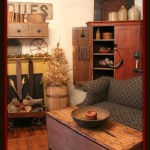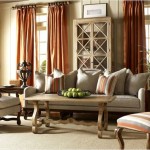Asian Dining Room Decorating: Farmhouse Fusion
The farmhouse aesthetic, with its rustic charm and emphasis on natural materials, might seem worlds away from the sleek lines and rich ornamentation often associated with Asian design. However, these seemingly disparate styles can be blended beautifully to create a unique and inviting dining space. The key lies in finding a harmonious balance between the two, highlighting their shared appreciation for craftsmanship and natural elements while respecting their distinct characteristics.
One of the foundational elements of farmhouse style is the use of natural wood. This can be incorporated into an Asian-inspired dining room through a rustic wooden dining table. Look for tables with a natural, slightly weathered finish, perhaps with visible wood grain or even live edge detailing. This provides a grounding element that complements the often more intricate details found in Asian décor.
Complementing the wooden table, consider dining chairs that blend the two styles. Woven rattan or bamboo chairs evoke an Asian sensibility while maintaining the natural material focus of the farmhouse aesthetic. Alternatively, wooden chairs with simple, clean lines painted in a soft, neutral color can create a cohesive look. Adding cushions with subtle Asian-inspired patterns or textures can further bridge the stylistic gap.
Lighting plays a crucial role in setting the ambiance of any dining space. A statement chandelier made from natural materials like bamboo or rattan can be a striking focal point, bringing an Asian touch while remaining consistent with the farmhouse emphasis on organic elements. Wrought iron light fixtures with a simple, rustic design can also work well, providing a touch of industrial flair that complements both styles.
Textiles offer an excellent opportunity to introduce Asian-inspired patterns and colors. A table runner or placemats made from natural fibers like linen or cotton, featuring subtle Asian-inspired prints or embroidery, can add a touch of elegance without overwhelming the space. Consider incorporating colors like deep indigo, rich ochre, or serene jade green, which are commonly found in Asian décor, while staying within a palette that complements the natural tones of the farmhouse style.
Wall décor can further enhance the fusion of these two styles. Consider hanging a large, framed piece of Asian calligraphy or a nature-inspired painting with a simple wooden frame. Alternatively, a gallery wall featuring a mix of framed botanical prints and Asian-inspired artwork can create a visually interesting focal point. Keep the wall color neutral, such as a warm white or light beige, to allow the artwork and other decorative elements to stand out.
Incorporating natural elements, a key component of both farmhouse and Asian design, can further unify the space. Potted plants, particularly those with Asian origins like bamboo or bonsai, add a touch of life and vibrancy to the room. Consider using woven baskets or ceramic pots to house these plants, further emphasizing the natural materials palette. A simple arrangement of dried flowers or branches in a rustic vase can also contribute to the overall aesthetic.
Accessorizing the dining space thoughtfully is essential to completing the look. Ceramic bowls and plates with simple, organic shapes and subtle Asian-inspired patterns can be displayed on open shelving or a sideboard. Small decorative items like carved wooden figurines or intricately woven baskets can add a touch of Asian flair without overpowering the farmhouse simplicity. Remember to avoid clutter and maintain a sense of balance and harmony within the space.
The flooring should also be considered in this design fusion. Wide plank wood floors in a natural finish are a staple of farmhouse style and can work beautifully in this setting. Alternatively, natural stone tiles or bamboo flooring can create a more Asian-inspired feel while maintaining the natural material focus. Layering a natural fiber rug, such as jute or sisal, can add warmth and texture underfoot.
Window treatments should be kept simple and functional. Linen or cotton curtains in a neutral color allow natural light to filter into the room while maintaining privacy. Bamboo blinds or woven shades can also be a good option, adding an Asian touch while filtering sunlight and creating a warm, inviting atmosphere.
Finally, consider the overall layout and flow of the dining space. Ensure there is ample space for movement around the table and chairs. Keep the furniture arrangement balanced and symmetrical to create a sense of harmony and order, a key principle in Asian design. By carefully considering each element, from the furniture to the accessories, one can create a dining room that seamlessly blends the rustic charm of farmhouse style with the elegance and tranquility of Asian design.

15 Asian Inspired Dining Room Ideas Home Design Lover Minimalist Luxury

Love This Decor Farmhouse Dining Kitchen Table Settings Asian Tables

85 Best Dining Room Ideas Designer
:max_bytes(150000):strip_icc()/de0a09_50941abc08ba4185be9559b9bc6c239emv2-e536d6c41f24432783f793bbdd421996.jpeg?strip=all)
50 Dining Room Decor Ideas For A Stylish Entertaining Space

20 Chinese Home Decoration In The Living Room Design Lover Decor

Rustic Glam Has Stolen My Heart Thanks To This Beautiful Design By Gregoryfunk Home Asian Decor

Season 2 Episode 13 Magnolia Homes Farmhouse Dining Room Fixer Upper Asian Home Decor

How To Use Green Create A Fabulous Dining Room Decoist

85 Best Dining Room Decorating Ideas Country Decor

10 Formal Dining Room Ideas From Top Designers







